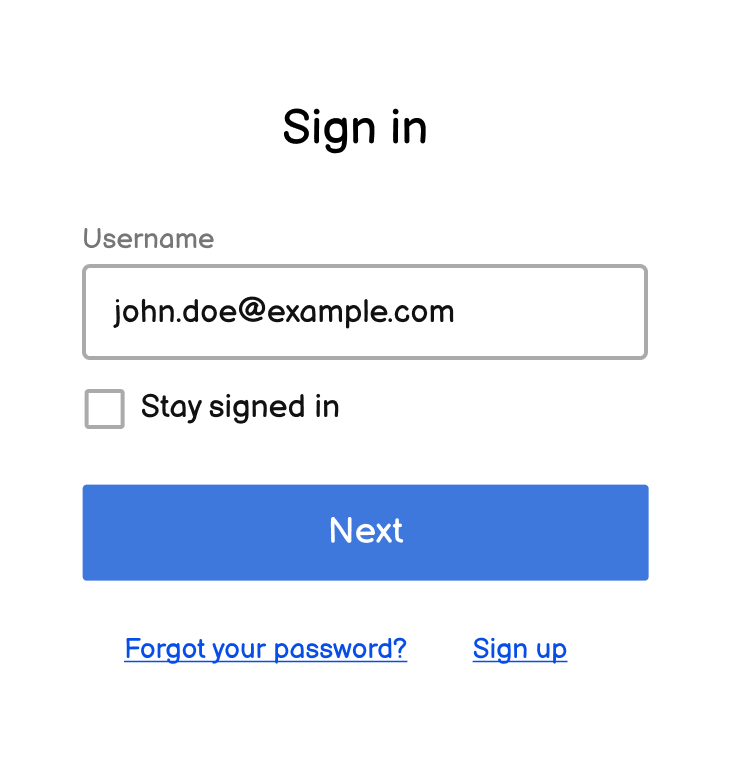On this page
Sign in with email only
Enable an email-only sign-in flow in your app using the embedded Okta Sign-In Widget.
Learning outcomes
- Configure your Okta org to enable a user to sign in without a password.
- Integrate a password-optional sign-in flow into an app using the Sign-In Widget.
What you need
Sample code
Update configurations
Before you can start integrating password-optional sign-up flows in your app,
Note: To test the sign-in integration, you must use a user with an enrolled email authenticator.
Integrate
Summary of steps
The following summarizes the steps involved in the password-optional sign-in flow.
The user submits their username
The user enters their username and clicks Next to start the sign-in flow.

The user starts the email challenge flow
The Sign-In Widget displays a page for the user to start verifying their identity by email. Email is the only choice because:
- The user has only enrolled the email authenticator.
- Email is the only allowed authentication factor in your app integration's app sign-in policy.
The user clicks Send me an email to begin the email challenge flow.

The user verifies their identity with the email authenticator
Okta Identity Engine sends a verification email to the user's primary email address. The email gives the user two ways to verify their identity:
- Copy a one-time passcode (OTP) from the email into the Sign-In Widget and submit it for verification.
- Click a "magic link" in the email that submits the OTP to Identity Engine on your behalf.
Your app requires no changes to use OTP since it's built into the Sign-In Widget. However, using magic links requires you to:
- Ensure that the Sign-In Widget is always initialized with OTP and state values. See the Embedded Okta Sign-In Widget fundamentals guide for details.
- Create an endpoint to handle the callback from the magic link.